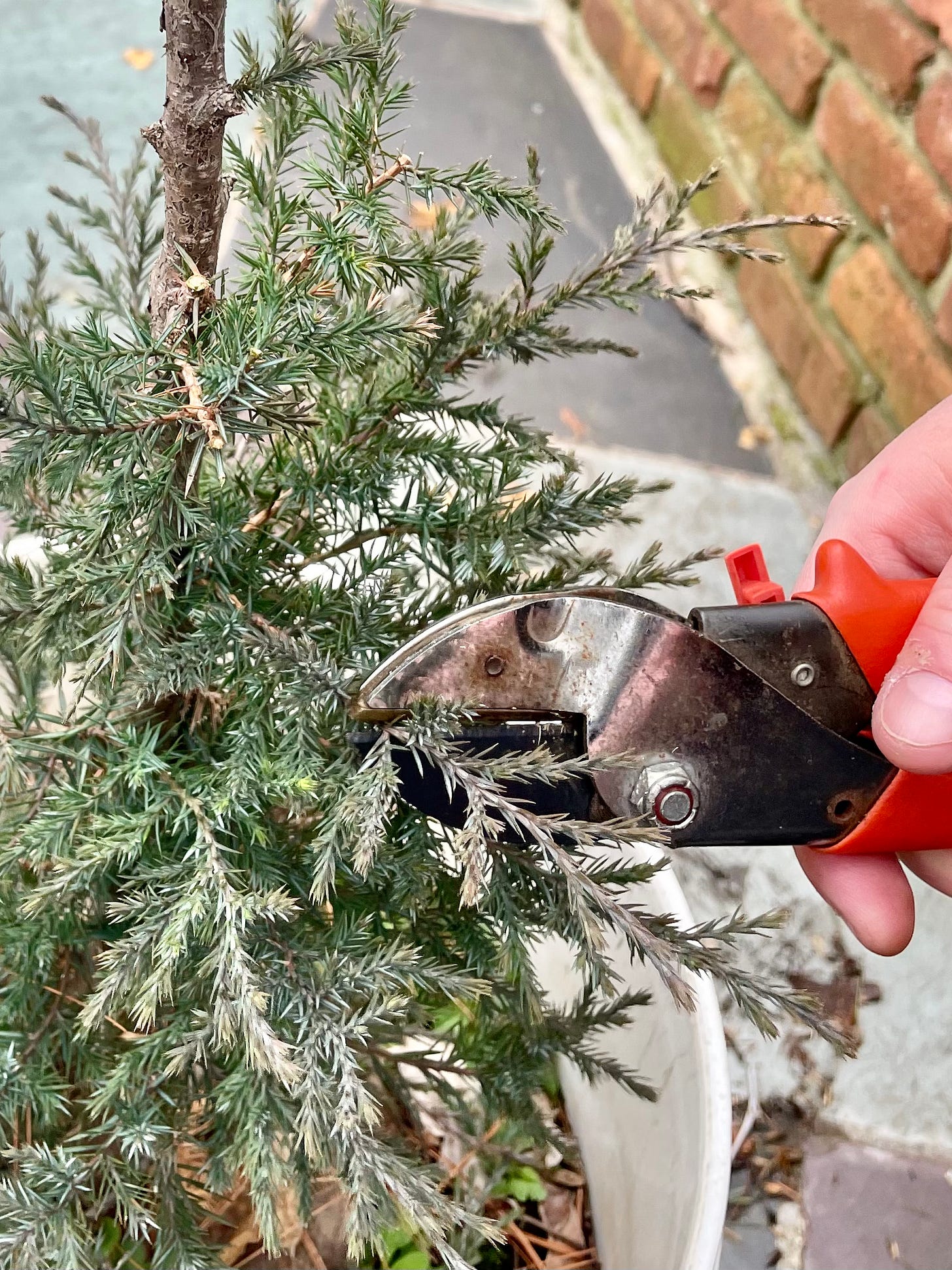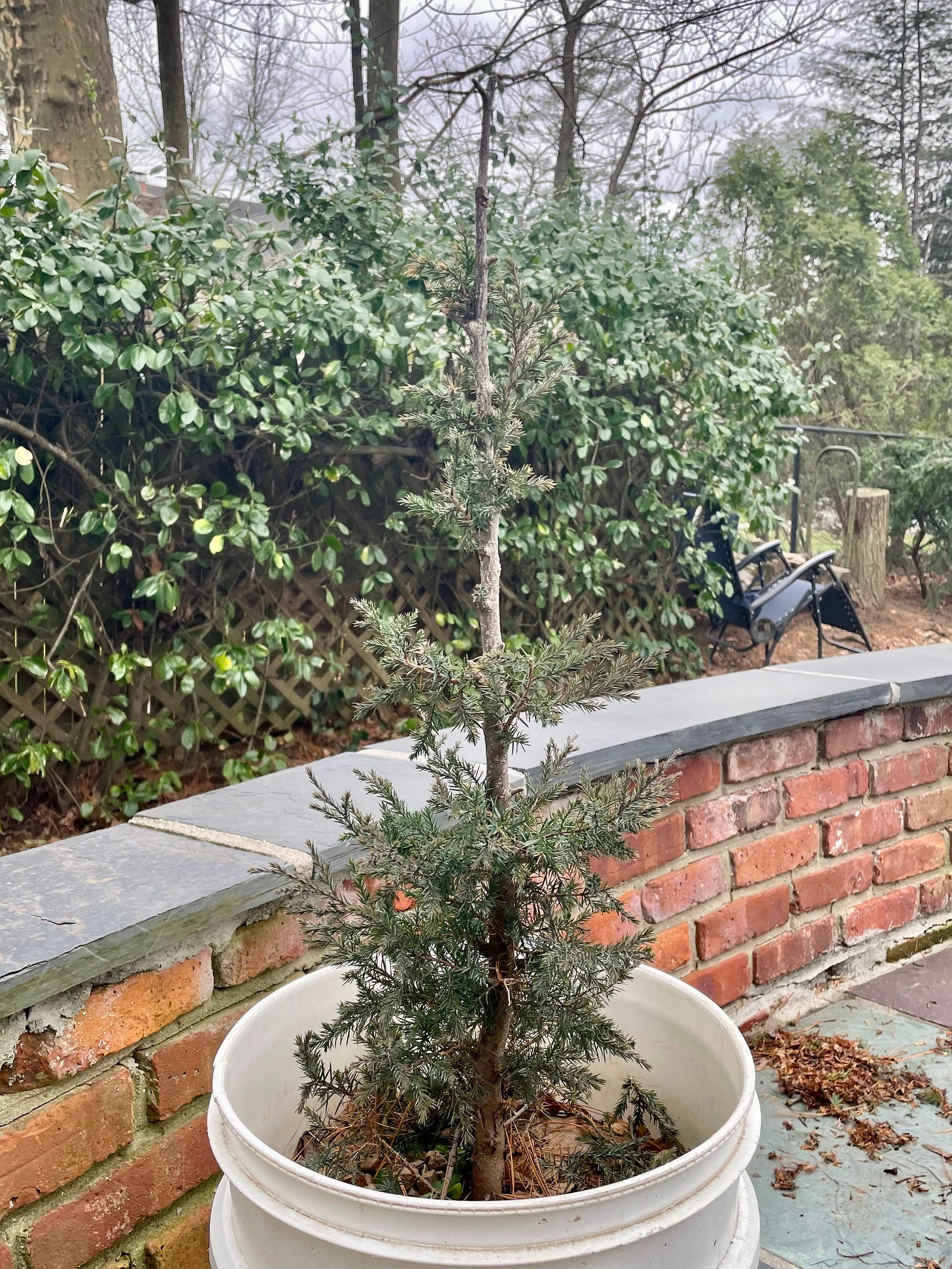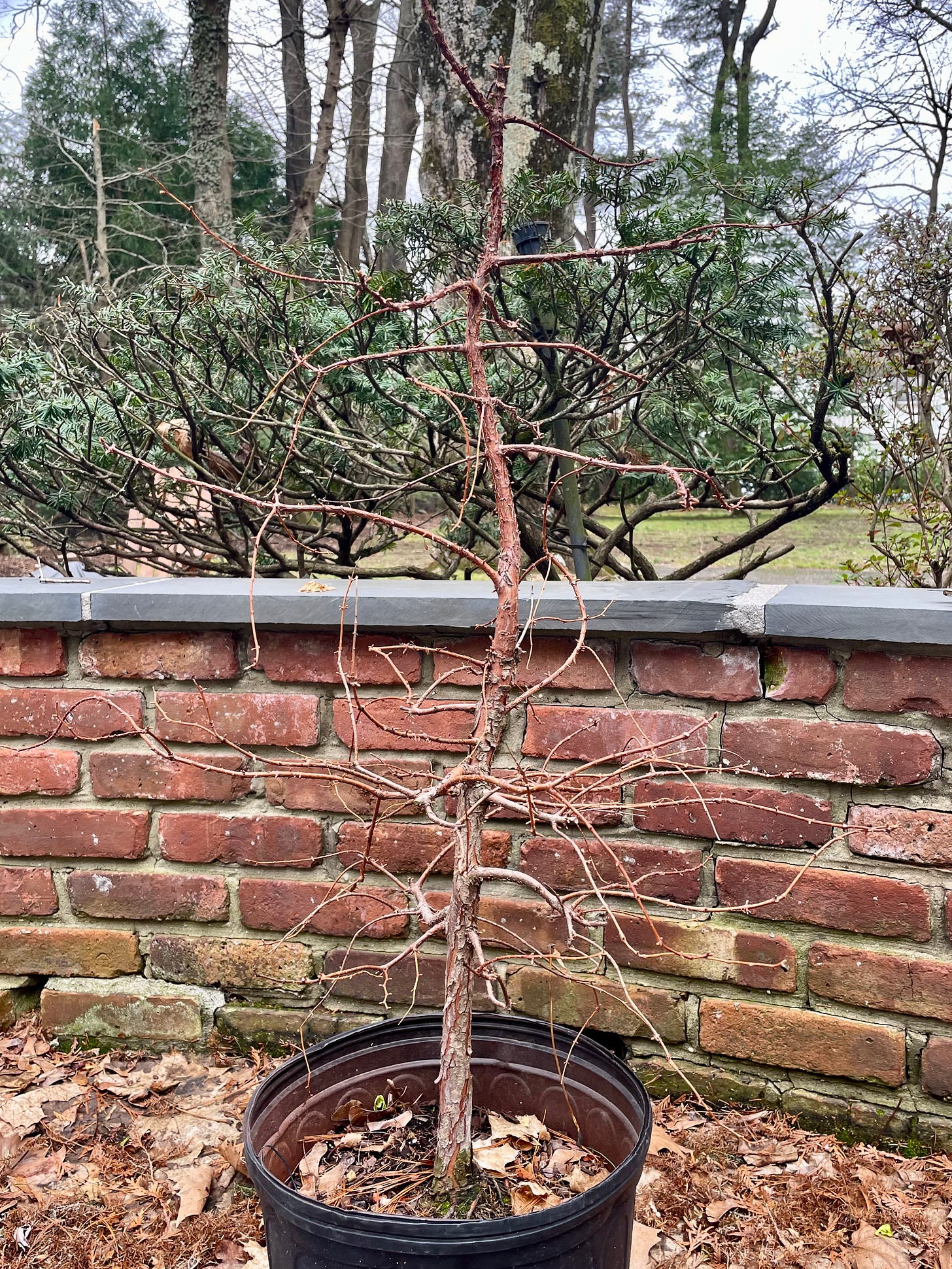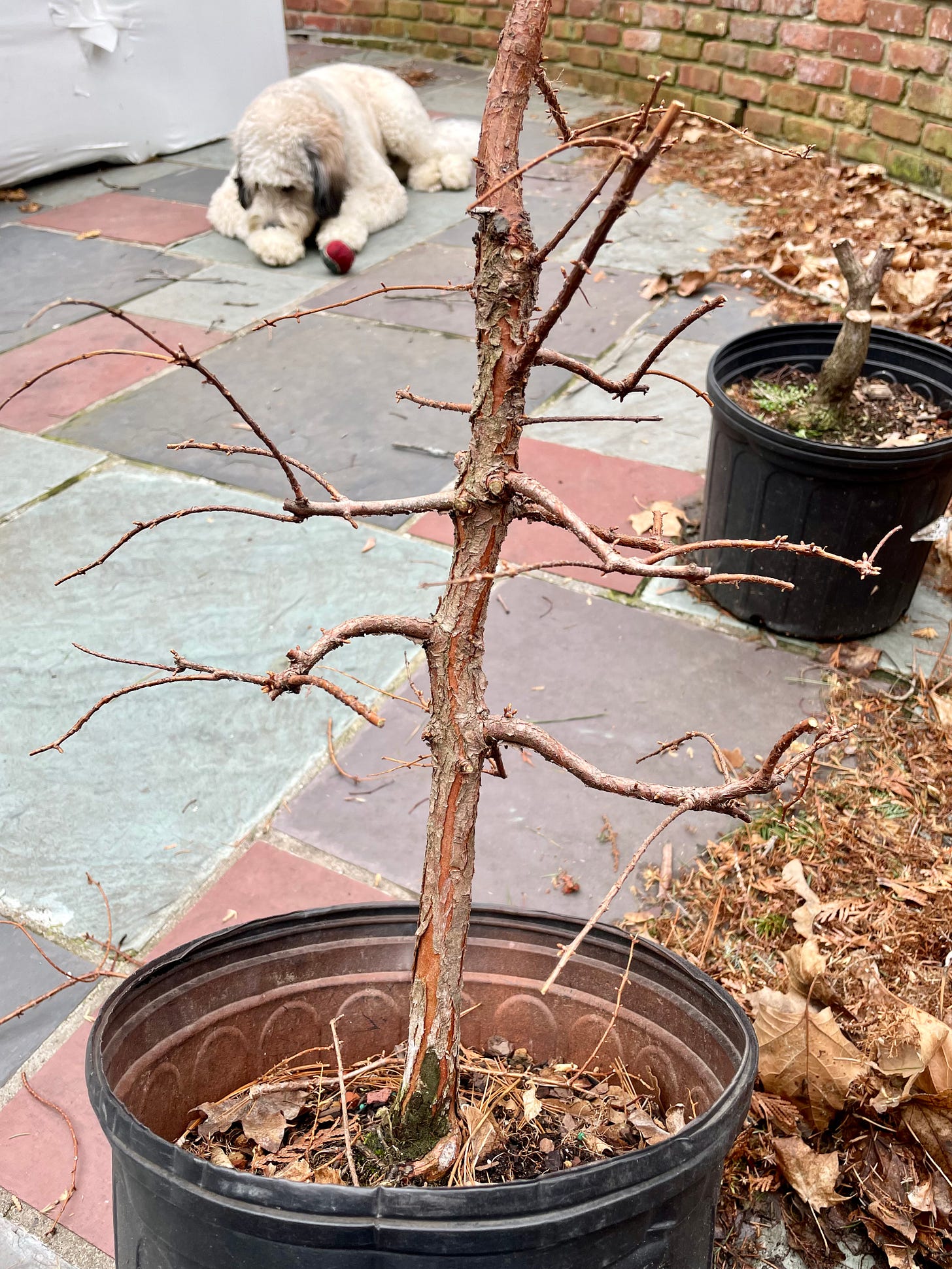Trees don’t heal after they’re injured. Their bodies aren’t designed to. What trees can do is compartmentalize. They erect chemical barriers between a wound and undamaged tissue and release a fast growing “wound wood” that scabs over and isolates the broken limb. If you sped up time lapse photos from a stationary camera, you’d get a film of The Blob encroaching over scorched earth, swallowing it whole. The scar never truly disappears. One day it will, ironically, be swallowed, Blob-like, by the tree’s outward growth. But the wound will impact the tree’s shape for years to come.
Once the emergency is handled, the tree tries to get back on course, only to find that it can’t. Though compartmentalized, the injury has left behind a hormonal imbalance that needs to be addressed. So the tree responds. It sets a new apical direction for a trunk or branch to take. Dormant buds hidden beneath the bark activate and form new shoots. This is ramification: secondary branches emerging from primary branches; tertiary branches from secondary ones.
With the cocksure stride of a newcomer to the bath house, I’ve just described what happens to a tree after pruning—from the tree’s perspective. I’m tempted by this narrative, to flourish in response to injury. Problem is, it ignores the trees that break from the shift in mass, or become infected at the wound, or starve for sunlight due to lack of vigor. The same survivorship bias that we weaponize towards other people. I think there’s something to learn from this, but let’s keep our metaphors in check, capisce?
I’ve been reading about tree injuries to distract me from a recent injury of my own. One night while preparing my dinner I slipped on the wet tile floor and dislocated my shoulder on the landing. This is the second time in five years that I’ve popped the socket, and this time was a little easier. In the ER, I accidentally popped it back into place while reaching for my ID. I’m lucky and will probably be fine. The repeated injury is cause for concern, though, and I’m in a sling for another month, when I have a follow-up appointment with an orthopedist.
You never realize how many things you do with both hands simultaneously until you lose the use of one. I’ve had to get clever, quick. And I’ve had to accept compromise. I need both hands to type and scroll my phone for hours and toss heavy woks, and I’m fortunate enough to still have both, so I wind up using my injured arm more than I should.
No, I would not say I am flourishing from injury. I do not recommend it. Responding, sure. Activating dormant skills, maybe. Mostly I’m managing my vigor.
A trip home to the ‘burbs last weekend gave me a chance to check in on the trees I’m keeping there. I, too, have had to compartmentalize; my bonsai collection now spans four locations, each with its own microclimate for me to consider. The four trees in the suburbs seem to have handled winter well. Now they’re almost ready to break dormancy, so I gave them an early spring trim.
The Eastern red cedar in the photos above is the zombie juniper that was stripped to its bones by squirrels, only to resurrect and sprout anew with a vengeance, suddenly in a form much more suitable for bonsai. It’s doing great. I want to give it a break after last year’s traumatic events, so this year all it has to do is grow. I’ve cut back on the top of the canopy and pruned any dead tips. Once the lower branches thicken up I’ll trim them back as well. It looks sloppy now, but I’m starting to see the shape of a tree here.
I’m excited for this tree. You don’t see many Eastern red cedar bonsai, for valid aesthetic and horticultural reasons, but they’re an abundant native species, they grow like weeds, and the needles have this…compelling musk redolent of tropical fruit tinged with cat piss. I see possibilities.
I love this monster. It’s one of my dawn redwoods, the one that struggled with a fungal infection last year and dropped all its leaves in mid summer. I want it to take 2022 easy as well, so all it has to do is grow and fill out the 3 gallon pot of nursery soil I transplanted it in. I’m taking advantage of my separation from this tree by trying to compartmentalize: out of sight, out of mind. I miss having it around, but this way I can let it grow really big and strong under the suburban sun, then come back to it when it’s matured into something really nice. Otherwise I’d be too tempted to poke and prod.
The limbs have grown unwieldy and there are some junctions with too many branches in one place, which will lead to awkward bulges if left unchecked. Now’s the time to decide on branches for the main design.
The guy who styled and sold me this tree left me lots of branches to work with, as well as wicked “sacrifice” trunk that’s working double time to thicken the whole tree. I should probably have trimmed it back further. I’m still learning how hard I can go.
Like the Eastern red cedar, it’s ungainly, but I’m starting to see a tree here. The way the trunk feints right, then left. The strips of silver bark against the red. What a tree, the dawn redwood! After taking this photo I pruned away two more branches from that junction in the middle. I think it’s ready to start sculpting secondary branches.
I’ll check back in with these trees in a month or two. I hope to be out of a sling by then, my shoulder healed enough to tentatively bring out into the world. I hope these trees heal well, too—well, not heal, but you know, respond. If we keep working together we’ll succeed in making beauty flourish from injury.
Tree reading
A 200-year-old oak allegedly planted by Ivan Turgenev has been disqualified from the European Tree of the Year competition to protest Russia’s invasion of Ukraine. [New York Times]
Tiktok has been getting too Instagramized for my tastes the last few months, but woodworker Justin Davies’ series on a wooden map of state trees is a consistent joy. [Tiktok]









